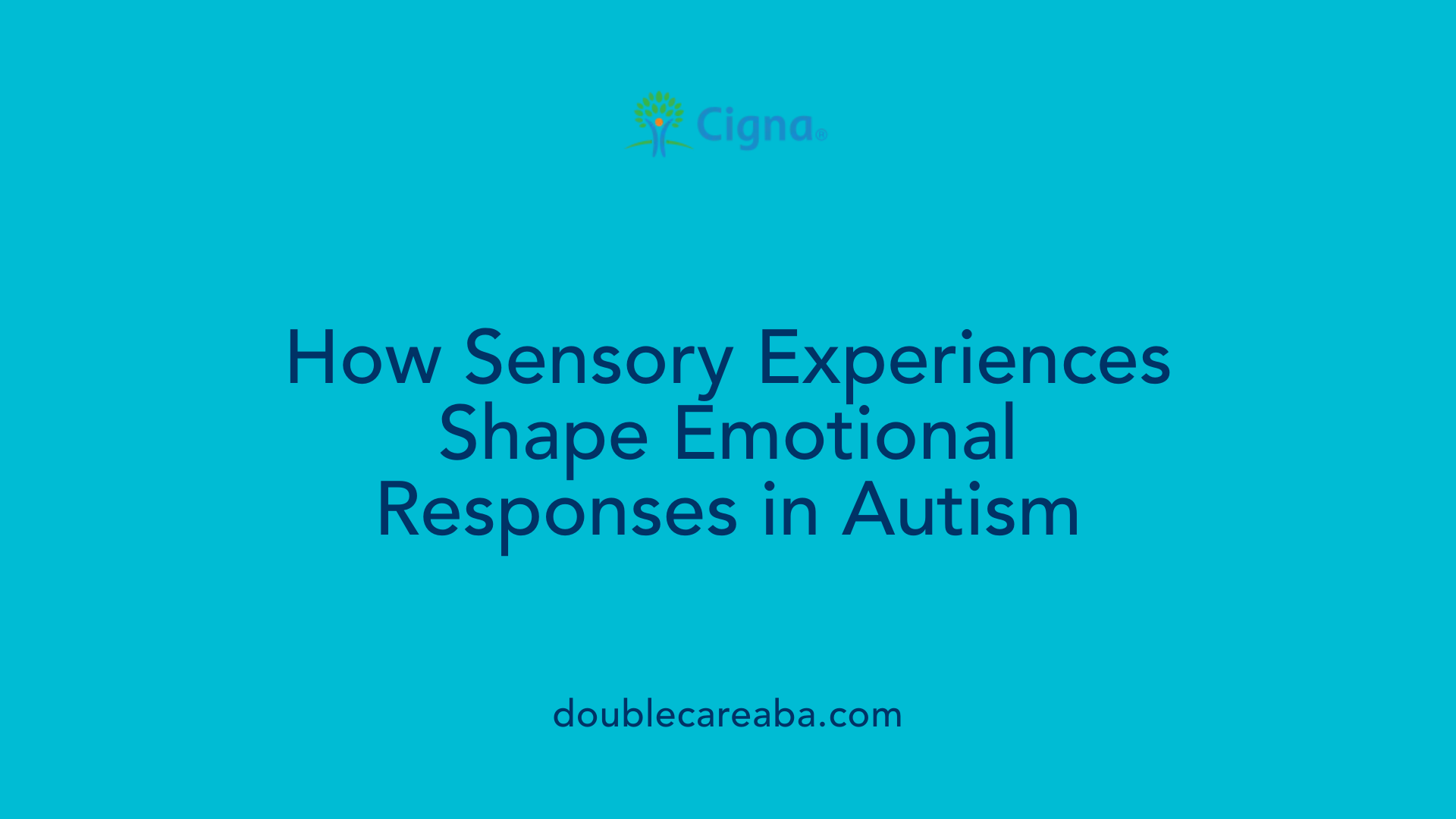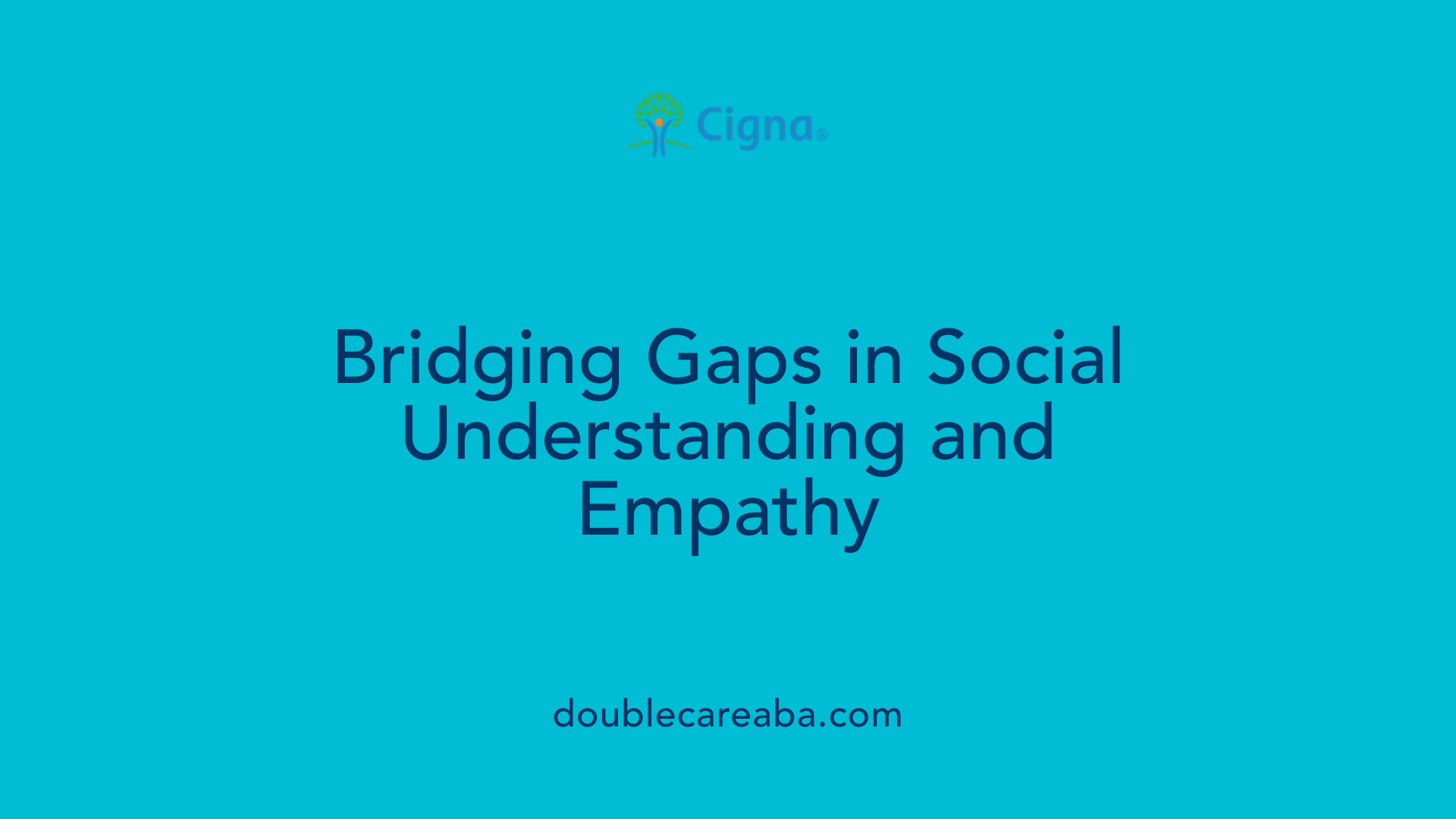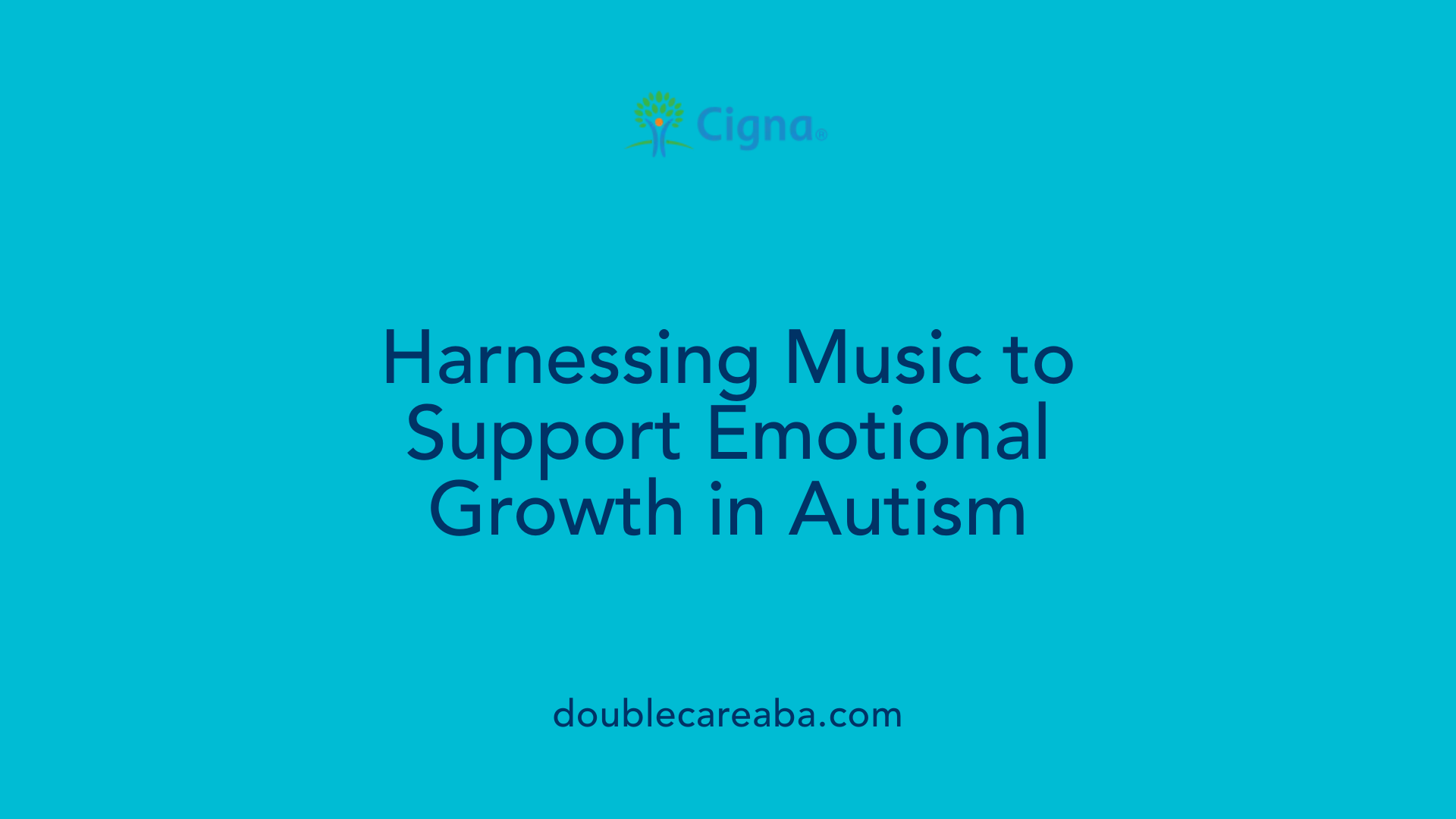Understanding Emotions in Autism: A Multifaceted Perspective
Autism spectrum disorder (ASD) encompasses a broad range of neurodevelopmental differences that influence how individuals perceive, process, and express emotions. While autistic individuals experience the full spectrum of human emotions, variations in sensory processing, neurobiology, and social cognition shape their emotional lives uniquely. This article explores the neurobiological foundations, common challenges, and therapeutic strategies associated with emotions in autism, aiming to foster empathy, understanding, and support for those on the spectrum.
Neurobiological Foundations of Emotional Processing in Autism

Why do autistic people struggle to express emotions?
Firstly, as autistic individuals, we sense the world differently. Emotional processing time often takes longer in autistic people as there can be more sensory information to process. The autistic brain isn't always able to filter out as much unnecessary sensory input as non-autistic brains can.
Understanding the neurobiological basis of emotional processing helps explain why these differences occur. Several key brain regions are involved in how emotions are experienced and expressed.
Neural regions involved in emotion
The amygdala, a vital structure in processing fear and other emotions, often shows atypical activity in individuals with autism. In some cases, it may be hypoactive, leading to challenges in recognizing emotions, while in others, it may become hyperactive, contributing to heightened emotional responses.
The prefrontal cortex (PFC) also plays a significant role. It is involved in emotional regulation, decision-making, and social behavior. In autism, abnormal activity or connectivity within the PFC can impair the ability to modulate emotions effectively.
The mirror neuron system (MNS), which helps us understand others’ actions and emotions, is thought to be involved in social cognition deficits seen in autism. Dysfunction in this system may contribute to difficulties in empathic understanding.
Brain activity differences in ASD
Studies using functional magnetic resonance imaging (fMRI) reveal that autistic individuals often exhibit abnormal activity in these regions. For example, there may be decreased activation in the PFC during emotional tasks, leading to impaired regulation.
Additionally, altered connectivity between the amygdala and PFC can hinder the brain’s ability to interpret and respond appropriately to emotional stimuli. Such differences may result in delayed responses to emotional cues or exaggerated reactions.
Neurobiological basis for emotion regulation difficulties
The combination of neural disparities contributes to the higher prevalence of emotion dysregulation in autism. Difficulties in balancing activity among these neural systems can cause intense reactions, delayed emotional responses, or shutdowns.
Research indicates that these neurobiological factors are intrinsic to autism rather than solely arising from external factors. Ongoing studies continue to explore these brain mechanisms to develop targeted interventions.
Understanding these brain-based differences helps clarify why many autistic individuals experience challenges with emotional processing and regulation. It underscores the importance of supportive strategies tailored to neurobiological needs.
| Neural Region | Typical Function | Differences in Autism | Possible Impact on Emotions |
|---|---|---|---|
| Amygdala | Fear and emotion processing | Hyper- or hypoactivity | Altered emotional responses, recognition challenges |
| Prefrontal Cortex | Emotional regulation, decision-making | Abnormal activity/connectivity | Difficulties in controlling emotions, delay in reactions |
| Mirror Neuron System | Empathy and social understanding | Dysfunction or reduced activity | Challenges in empathic attunement and social cues |
Gaining insight into these neurological underpinnings is crucial for advancing therapies and support systems that improve emotional understanding and well-being for individuals with autism.
Sensory Processing and Its Impact on Emotions

Do autistic people feel emotions differently?
Autistic individuals often experience emotions in a manner that is both similar and different from neurotypical people. While they are capable of feeling a full spectrum of emotions—happiness, sadness, anger, fear—the way they process and express these feelings can vary significantly. This variation is deeply rooted in their unique neurobiological makeup and sensory processing traits.
A hallmark of autism is heightened or diminished sensory sensitivities. Some autistic people may be overwhelmed by loud noises, bright lights, or tactile stimuli, which can lead to intense emotional reactions such as anxiety or irritability. Conversely, others may be under-responsive to sensory input, resulting in delayed emotional responses or seeming indifference.
Crucial to understanding emotional experiences in autism are the sensory systems involved in internal and external sensation. Interoception—the awareness of internal bodily states—plays a significant role in emotional regulation. Challenges in interoception can hinder recognition of physical cues associated with emotions like stomach discomfort when anxious. Similarly, nociception, or pain perception, can influence how distress is experienced, while proprioception, or body awareness, affects how individuals interpret their physical position and movements, impacting their emotional reactions.
Many autistic individuals also experience difficulties with alexithymia, characterized by challenges in identifying, describing, or understanding their own emotions. This makes emotional regulation and social communication more complex, often leading to delayed or overwhelmed feelings that can escalate quickly.
Furthermore, reading emotional cues from others—like facial expressions, tone of voice, or body language—can be challenging. This impacts empathic responses and can create a disconnect between how autistic and non-autistic individuals perceive each other's emotions.
Sensory overload—an excessive influx of sensory stimuli—can trigger emotional responses like meltdown or shutdown, which are often misunderstood by others. For example, a previously manageable situation may suddenly become overwhelming, resulting in behaviors like pacing, crying, or withdrawal.
In summary, while autistic individuals experience emotions fully, sensory sensitivities and processing differences influence how these emotions are felt, expressed, and managed. Recognizing these factors is vital for providing supportive environments that accommodate their emotional and sensory needs.
Emotional Challenges: Alexithymia and Dysregulation

What are the emotional challenges faced by individuals with autism?
Individuals with autism often encounter significant emotional hurdles stemming from difficulties in regulating their emotions. Many experience intense reactions such as meltdowns, tantrums, aggression, or even self-injury, especially during stressful situations or sensory overload. These reactions are linked to differences in brain activity, particularly in the amygdala and prefrontal cortex, areas that are crucial for processing and managing emotions.
Physiological hyperarousal, where the body remains in a heightened state of alertness, also plays a role. This combination can lead to increased anxiety, irritability, impulsiveness, and a general struggle to cope with emotional stress. Such challenges can persist throughout life, affecting social relationships and daily functioning. Recognizing and addressing these emotion regulation difficulties are vital for creating effective support systems, therapies, and coping strategies to improve overall emotional well-being.
Why do many autistic individuals struggle to describe their emotions?
A notable proportion of autistic individuals, estimated at around 50%, experience alexithymia—a condition characterized by difficulty understanding, recognizing, and describing their own feelings. This is more common within the autistic community, with approximately 20% affected.
People with alexithymia often find it challenging to notice physiological cues like a racing heart or tense muscles that typically signal emotional states. As a result, they may misinterpret or overlook their feelings, leading to confusion or emotional disconnect. This impairments hampers effective emotional regulation and complicates social interactions, often resulting in increased anxiety, frustration, or withdrawal.
Understanding the high prevalence of alexithymia in autism underscores the importance of tailored interventions, such as emotion recognition training, mindfulness practices, and communication techniques, to help individuals better identify and convey their internal states. Fostering this awareness can significantly enhance social integration and emotional resilience.
The Role of Empathy and Emotional Recognition in Autism

Understanding Others’ Emotions
Many autistic individuals encounter difficulties in recognizing and interpreting emotional cues, such as facial expressions, tone of voice, and body language. These cues are essential for effective social interaction, helping us understand how others feel and respond appropriately. While some autistic people may struggle with subtle or complex emotional signals, they can usually recognize basic emotions, especially in predictable or structured situations like music. Interestingly, recognition of simple emotions in music often remains intact, possibly because music strongly activates neural systems involved in emotional processing.
Empathy Gaps and the 'Double Empathy Problem'
The 'Double Empathy Problem' describes mutual misunderstandings where both autistic and non-autistic individuals may find it hard to connect emotionally. This is not solely due to deficits on the part of autistic individuals but also involves differences in communication styles and emotional expression. Because of these differences, autistic persons might feel misunderstood or fail to decode social cues, which can lead to empathy gaps—misalignments in emotional understanding that hinder social bonding.
Facial Expressions and Body Language
Autistic individuals may interpret facial expressions and body language differently from neurotypical people. Although they often recognize explicit cues, subtle expressions or social nuances can be missed, especially when sensory sensitivities interfere. Nonetheless, some studies show that autistic people can excel at reading basic emotional cues in controlled environments. For example, their ability to recognize simple facial expressions or emotional states in music suggests that their challenges are context-dependent, often influenced by sensory sensitivities and social experiences.
| Aspect | Typical Challenges | Strengths | Supporting Strategies |
|---|---|---|---|
| Recognizing emotions | Difficulty in picking up subtle cues | Recognize basic emotions in structured settings | Use visual aids, emotion cards, and social stories |
| Interpreting body language | Missed or misread cues | Recognize clear or exaggerated expressions | Provide explicit teaching and simplified cues |
| Mutual understanding | Empathy gaps due to different expression styles | Ability to understand basic emotions | Foster open communication, embrace neurodiversity |
Understanding these differences can improve social interactions and reduce misunderstandings. Educating both autistic and non-autistic individuals about unique emotional processing promotes acceptance and more effective communication, bridging the empathy gap.
Music and Neural Engagement: Therapeutic Insights

How can music be used to support emotional development in autism?
Music plays a special role in engaging the brain's emotional and social regions. It activates limbic areas, which are involved in processing feelings, and can stimulate the mirror neuron system (MNS), which helps in understanding and mirroring others' actions and emotions. This neural activation makes music a powerful tool for emotional learning and social connection.
People with autism often show strong preferences for music and sometimes process it more effectively than other social stimuli. Music therapy leverages this by creating a safe and engaging environment for emotional expression and social interaction. When individuals with ASD listen to or perform music, they activate neural pathways that support empathy, emotional recognition, and social bonding.
Because music naturally stimulates shared emotional experiences, it helps reduce social barriers and encourages communication. Especially for those who find traditional social cues difficult, music provides an alternative, enjoyable way to connect and develop emotional skills. This approach not only improves emotional responsiveness but also helps foster meaningful social engagement, making it an invaluable resource in autism therapy.
| Aspect | Explanation | Additional Details |
|---|---|---|
| Neural Activation | Music activates limbic regions and neural circuits involved in emotion | Facilitates mood regulation and emotional understanding |
| Mirror Neuron System | Engaged during musical activities | Enhances empathy and social cognition |
| Therapy Benefits | Improves social and emotional responses | Adapted for individual preferences and needs |
In summary, music therapy can significantly support emotional growth in autistic individuals by engaging neural systems associated with feelings, understanding, and social connection. This approach offers a joyful and effective path for fostering emotional development and better social integration.
Strategies for Supporting Emotional Skills Development
Are therapeutic strategies available to help autistic individuals manage emotions?
Yes, there are various therapeutic approaches designed to support autistic individuals in managing their emotions effectively. Evidence-based therapies such as cognitive-behavioral therapy (CBT) are often utilized to improve emotional regulation, especially when combined with strategies addressing co-occurring conditions like anxiety and depression.
In addition to CBT, interventions like social skills training and occupational therapy can help individuals understand and respond to social cues and sensory sensitivities. Sensory integration therapy aims to reduce sensory overload and promote more adaptive emotional reactions.
Using visual aids and structured routines plays a significant role. Tools such as emotion recognition cards, the Five Point Scale, or social stories assist individuals in identifying and labeling their feelings.
Supporting strategies go beyond therapy sessions. Acceptance of self-regulation behaviors including stimming, creating sensory-friendly environments, and developing personalized coping plans are vital. These methods help individuals create a sense of safety and control.
Overall, these comprehensive approaches contribute to better emotional management, helping autistic individuals navigate their emotions more comfortably and build stronger social connections.
Conclusion: Embracing Neurodiversity and Supporting Growth
Why is understanding autism’s emotional profile important?
Understanding how autistic individuals process and express emotions is essential for fostering compassion and effective support. Autism often involves sensory processing differences that influence emotional responses, making emotions feel more intense or overwhelming. Many autistic people also face challenges with alexithymia — the difficulty in identifying and describing their own feelings — which can hinder emotional regulation and social interactions.
Recognizing these differences helps in creating environments that are more accommodating and less triggering of emotional overload. It also guides the development of tailored interventions that improve emotional awareness, regulation, and social connection.
How does acceptance and the use of tailored interventions support autistic growth?
Acceptance is fundamental; understanding that emotional sensitivities and regulation difficulties are part of autism allows supporters, therapists, and communities to foster a supportive environment. Strategies like validating feelings, providing time for emotional processing, reducing sensory overload, and encouraging self-expression in preferred ways are vital.
Interventions such as emotion recognition tools, social skills training, mindfulness exercises, and specialized therapies like CBT can help individuals better understand and manage their emotions. For example, tools like ladder pictures or social stories assist in decoding emotions, while therapies like the 'From Like to Love' CBT program help understand and express affection.
In what ways can promoting mental health and resilience be achieved?
Developing resilience involves strengthening emotional awareness and regulation skills, promoting self-compassion, and building supportive networks. Early skill development in recognizing physical signs of feelings, using calming strategies, and practicing mindfulness can reduce anxiety and prevent emotional dysregulation.
Supporting adults with autism through community programs, therapy, and peer groups provides ongoing encouragement and learning opportunities. Recognizing that emotional hypersensitivity and over-arousal are common, interventions can focus on shielding against emotional overwhelm and cultivating positive social interactions.
Does autism lead to emotional hypersensitivity or overreaction?
Autism often involves heightened emotional sensitivity, which can lead to intense emotional reactions, feelings of overwhelm, and difficulties with emotional regulation. Sensory processing differences, including hypersensitivity to sights, sounds, textures, and other stimuli, can contribute to emotional overload and reactions such as meltdowns or withdrawal. While some autistic individuals experience genuine empathy, sensory overload can interfere with recognizing and expressing emotions appropriately. Variability exists among individuals, with some experiencing more pronounced emotional hypersensitivity and regulation challenges than others. Managing emotional sensitivity in autism involves environmental modifications, coping strategies, and support systems to help individuals navigate their emotional responses effectively.
Summary and Future Directions
Understanding how autistic individuals process and express emotions is crucial for improving their social and mental well-being. Many autistic people experience sensory processing differences, which can lead to heightened or diminished emotional responses, and phenomena like alexithymia make it difficult to identify or describe feelings. These challenges often result in emotion dysregulation, causing behaviors such as meltdowns or social withdrawal. However, strategies such as validation, sensory management, targeted therapies, and tools like emotion recognition aids can support emotional development. The role of music therapy and neurobiological research offers promising avenues for intervention.
Early intervention and tailored support are vital in helping autistic individuals develop emotional awareness and regulation skills. Recognizing the high prevalence of alexithymia—especially among autistic people—allows clinicians to implement specific approaches to improve emotional understanding, which in turn can reduce anxiety and improve social interactions. Furthermore, appreciating the unique ways autistic individuals experience and communicate emotions fosters better mutual understanding and acceptance.
Future research should continue exploring the neural mechanisms underlying emotion processing and regulation in autism. Investigations into effective therapies, including mindfulness, cognitive behavioral approaches, and music-based interventions, hold promise for enhancing emotional resilience. Emphasizing individualized treatment plans based on sensory sensitivities and emotional profiles will be essential in supporting the emotional well-being of autistic populations.
Fostering Emotional Well-being in Autism: A Path Forward
Understanding the complexities of emotional experience in autism is crucial for developing compassion, effective support strategies, and inclusive societal attitudes. Through neurobiological research, therapeutic innovation, and respectful communication, we can help autistic individuals navigate their emotional worlds with greater ease, resilience, and understanding.
References
- Autism and Emotions: How and Why Do Autistic People ...
- Alexithymia
- Expert Q&A: Understanding autism emotional regulation
- Autism, Emotion Recognition and the Mirror Neuron System
- Autism, Meltdowns, Managing Emotions
- Managing Emotions: Affection and Autism
- Autism Emotional Sensitivity: An Overview
- Understanding Emotional Processing in Autistic People














